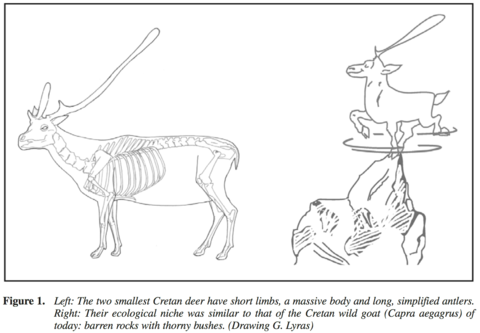
One of the most interesting problems in paleontology is the occurrence in the Quaternary of a rich fauna of endemic dwarf and giant species of vertebrates on several Mediterranean islands, including Sicily, Sardinia, Malta, Tilos, Cyprus, and Crete. In Crete, elephants, hippos, cervids and murids changed; generally, smaller animals increased in size whereas larger animals decreased in size. This project focuses on one of these groups, the deer. Their evolution on Crete is more complex, with greater variation in size and morphology than in any other vertebrates that made it to the island. Different named taxa (5-8 different species) ranged in size from animals as large as a caribou or a small elk to specimens similar in size to a dik-dik or a muntjac. We took advantage of the ability to extract DNA from dated dental and bone remains to produce a molecular phylogeny of the extinct cervids of Crete. For comparative purposes, we also included DNA sequences of several mainland extinct and extant species. This phylogenetic approach helped us address a series of questions regarding their phyletic relations with the mainland fauna, and the patterns and timing of colonization of Crete (i.e., Are the different named taxa distinct phyletic lineages? Which colonization model do the genetic data support? Did the lineage(s) of Cretan deer originate from one or several mainland species? This work was in collaboration with Nikos Poulakakis from the Natural History Museum of Crete, David S. Reese from the Yale Peabody Museum and the group of R. Fleischer from the Smithsonian National Zoological Park.